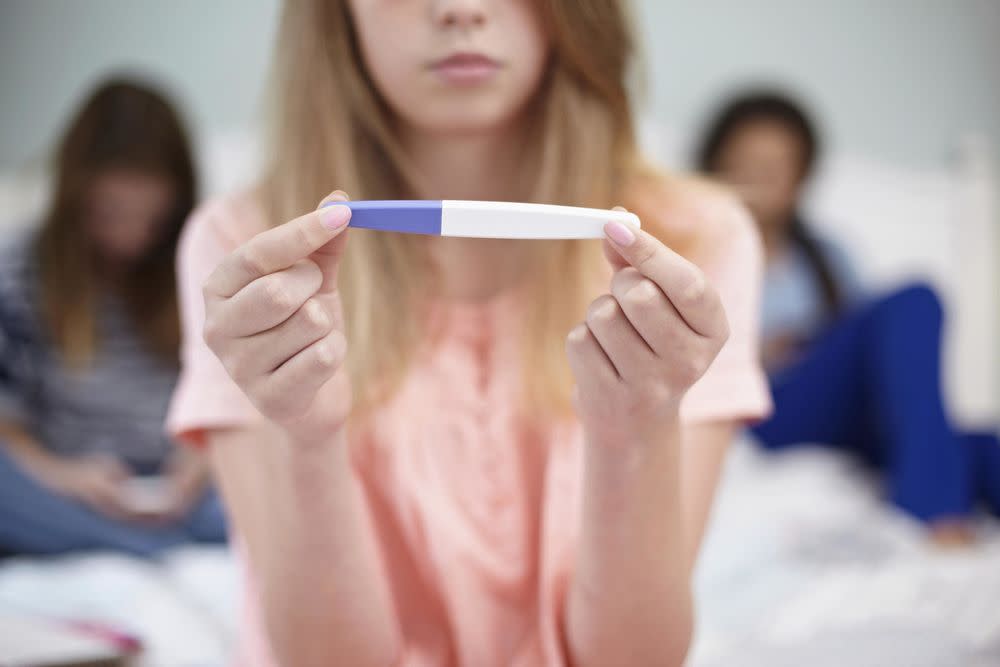Teen Pregnancy Rates: Can We Predict the Future?

Teen pregnancy rates have steadily declined in recent years, according to the Centers for Disease Control and Prevention (CDC). Even so, thousands of American teenagers become pregnant annually, leading to financial, social, and health consequences for the teen mothers and their babies. Read on for the latest facts and statistics.
Teen Pregnancy Rates and Statistics
Forty-three percent of females aged 15 to 19 have had sexual intercourse, says the CDC. But the birth rate for teenage girls has steadily declined since 1991. In fact, there was a reported 7% decrease from 2016 to 2017, according to a National Center for Health Statistics (NCHS) data brief from August 2018. The brief found an average of 18.8 births per 1,000 American teenagers in 2017.
RELATED: Teenage Pregnancy: A Parent's Guide
The birth rate decline stretches across almost every race. The NCHS Data Brief reported on the numbers from 2016 to 2017:
Non-Hispanic Asian females: 15% decrease (ending with a total of 3.3 births per 1,000 teens)
Hispanic females: 9% decrease (28.9 births per 1,000 teens)
Non-Hispanic white females: 8% decrease (13.2 births per 1,000 teens)
Non-Hispanic black females: 6% decrease (27.5 births per 1,000 teens)
Females of American Indian and Alaska Native descent: 6% decrease (32.9 births per 1,000 teens)
Females of Non-Hispanic Native Hawaiian or Other Pacific Islander descent: Slight decrease from 28.6 births per 1,000 teens in 2016 to 25.5 births per 1,000 teens in 2017
As the statistics show, many disparities still exist between races. For example, Hispanic teens gave birth an average of 15.7 times more (per 1000 females) than non-Hispanic white teens – that’s a difference of about 55%. The CDC attributes these inconsistencies to geographic location and socioeconomic conditions (such as income and education level). What’s more, the CDC says that women in welfare systems like foster care have an increased risk of teen pregnancy.
Here are the 2016 to 2017 teen pregnancy statistics broken down by gender:
15-17 years old: 11% decrease (ending with a total of 7.8 births per 1,000 teens)
8-19 years old: 6% decrease (ending with a total of 35.1 births per 1,000 teens)
RELATED: My Life as a Teen Mom
Why Have Teen Pregnancy Rates Declined?
According to Kara Malone, M.D., medical director of the Teen and Pregnant Program at Nationwide Children’s Hospital, teen birth rates have declined for a couple of reasons. “One is an improvement in comprehensive sex education for teenagers and adolescents,” she says. Many high schools provide reproductive health lessons for their students, and parents might also open up about the topic. By understanding the consequences of unprotected sex, teens may be more likely to abstain, use a condom, or learn about other methods of pregnancy prevention.
Dr. Malone also attributes the decline in teenage pregnancies/births to “increased access to contraceptive education and contraception use.” If a teenager has any questions regarding birth control, she can perform a simple Google search. Smartphones, tablets, and laptops put this important information at our fingertips, letting teenagers learn about the different birth control options and choose the best one for them. What’s more, some health care centers like Planned Parenthood let teens receive birth control without parental consent.
But even though more teens use birth control nowadays, they aren't necessarily relying on the best options. In 2015, the CDC reported that 86% of teens used birth control during their last sexual encounter. Unfortunately, though, only 5% used the most effective methods, such as implants and intrauterine devices (IUDs). The most common methods, hormonal birth control and condoms, have 91% and 82% effectiveness with typical use, respectively. By comparison, IUDS and implants are more than 99% effective. (For more information about birth control options, visit bedsider.org. It's a birth control support network operated by the Power to Decide campaign, which aims to prevent unplanned pregnancy.)
RELATED: 9 Common Birth Control Options
Additionally, while statistics have shown a decline in teenage pregnancies, the American teen birth rate “is still one of the highest in the developed world,” says the Guttmacher Institute, a research and policy organization for sexual and reproductive health. With increasing amounts of information available each day, teenage pregnancy rates will hopefully continue to decline in our country for years to come.
